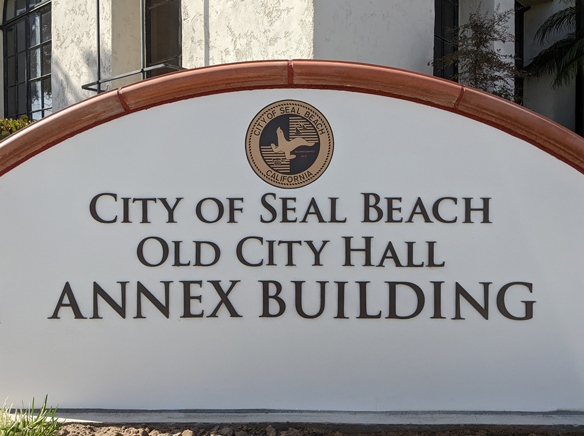Following a public hearing, the Seal Beach Planning Commission on Monday, Sept. 19, recommended approving a Zoning Text Amendment to the section of the city code related to accessory dwelling units, more commonly known as “granny flats.”
It will be up to the City Council to approve the Municipal Code changes at a future date.
Planners also approved two minor use permits.
Technically, this was a special meeting even though all three hearings had been announced through legal notices. (See below for details.)
Zoning Code change
The vote on the Municipal Code update was 4-1, with District Four Commissioner Patty Campbell casting the dissenting vote. “I know this is a requirement from the state, but I’m going to vote no,” Campbell said.
After the meeting, she described her vote as a protest vote.
This was necessary in order to comply with state law, according to the staff report by Interim Senior Planner Art Bashmakian and Community Development Director Alexa Smittle.
During the meeting, Smittle advised the planners that because of bills that had recently become law, staff would return to the commission with more changes to the accessory dwelling unit section of the city code.
Background on ‘granny flats’
“On July 26, 2021, the City Council adopted Ordinance 1690 (Zone Text Amendment 21- 1) regarding regulations for Accessory Dwelling Units (ADUs) and Junior Accessory Dwelling Units (JADUs) in residential zones to comply with new housing laws that became effective January 1, 2020 and January 1, 2021,” Bashmakian and Smittle wrote.
During the meeting, Bashmakian told Planners that under state law a junior accessory dwelling unit is a minimum 150 square feet in size.
According to the report, the city submitted the new code to the California Department of Housing and Community Development. On April 8, the city received a letter from HCD that pointed out sections of the updated city code that state officials did not consider in compliance with state law, according to the staff report.
For one example, the state housing agency cited multiple sections of the code that did not include multi-family dwellings. The proposed revisions to the Seal Beach granny flat ordinance include references to multi-family dwellings, according to the staff report.
Another example: “The City must revise the height restriction to allow for at least 16 feet for both detached and attached ADUs,” according to the California Department of Housing and Community Development.
“The revised Code provides that the height of a detached ADU shall not exceed 16 feet; and an attached ADU shall not exceed the height of the primary dwelling to which it is attached, or 16 feet, whichever is greater,” according to the staff report.
The state government objected to the city requiring a minor use permit to allow the small residential units.
“The Minor Use Permit requirement is removed,” according to the staff report. Applications for ADUs will be processed administratively, according to the staff report.
Agenda and notice issue
Although this week’s planning meeting had been scheduled weeks ago, a glitch made it necessary for the city to issue a notice of a special meeting.
The agenda and the agenda package for the Sept. 19 meeting were not posted on the city website as of late Friday afternoon, Sept. 16.
The Sun checked the website again on Saturday, Sept. 17. Still no agenda, no agenda package, and no notice of cancellation of the scheduled meeting.
The Sun texted City Manager Jill Ingram at 5:08 p.m. At 8:02 p.m., Ingram texted back. “It was posted outside city hall and distributed to planning commissioners yesterday and is available online now,” Ingram wrote. “City Clerk is advising city attorney as well.”
On Sunday, Sept. 18, at 4:24 p.m., Ingram texted the Sun to report that City Clerk Gloria Harper had emailed the Sun the special meeting notice and agenda to meet Brown Act requirements and to make sure the city didn’t impact applicants with delays.
The last time an agenda package was not posted online, the City Council had to reschedule a hearing on a proposal to overrule the Orange County Airport Land Use Commission’s finding that the city government’s Housing Element was inconsistent with land use in the vicinity of the JFTB airfield.




